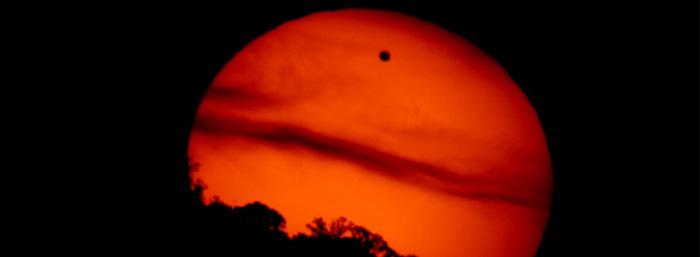- About
- Admissions
- Study at AUS
- Prospective Students
- Bachelor's Degrees
- Master's Degrees
- Doctoral Degrees
- Admission Publications
- International Students
- Contact Admissions
- Grants and Scholarships
- Sponsorship Liaison Services
- Testing Center
- New Student Guide
- File Completion
- New Student Orientation
- Payment Guide
- Executive Education
- Students with Disabilities
- Academics
- Life at AUS
- Research
- Contact Us
- Apply Now
- .

AUS to observe a unique astronomical event
The Physics Department at American University of Sharjah (AUS), in collaboration with Dubai Astronomy Group, will hold a public observation of a unique astronomical event that happens only twice every century. Astronomy enthusiasts and members of the public are invited to witness the transit of Venus over the face of the Sun on Wednesday, June 6, 2012 from 6:00 a.m. to 8:30 a.m., at the university's Main Plaza.
The last time the planet Venus passed over the face of the Sun was in June 2004, and the next time the event will happen is in December 2117. For this very rare event, AUS and Dubai Astronomy Group have organized a public viewing, even though it occurs very early in the day in this part of the world.
There will be a number of telescopes as well as 100 special viewing glasses available for those present, to facilitate and ensure a safe observation of the event, as the sun must never be observed directly by naked eyes or with instruments.
"This is a unique opportunity for people to catch an exceptional heavenly event and to witness the power of science in predicting faraway celestial phenomena with the greatest precision," said Dr. Nidhal Guessoum, Professor and Interim Head, Department of Physics.
A transit occurs when a planet moves between the earth and the sun. This is similar to a solar eclipse, which occurs when the moon moves between the Earth and the Sun covering part or all of the solar disc. Only seven such events have occurred since the invention of the telescope. The next two transits will occur on December 11, 2117 and December 8, 2125. These occurrences are important as they helped astronomers in the past calculate the distance between the earth and the sun, and today they indirectly help researchers improve techniques for the detection of the atmosphere around other stars.
As with a solar eclipse, safety precautions must be taken when viewing this exceptional event. The transit can be safely observed through the projection method, a Mylar film as well as through a #14 welder's glass.
These transits have a strange pattern of frequency and occur after 121.5 years (1882 and 2004), followed by an appearance eight years later (2012). They then occur 105.5 years later, with the next appearance once again occurring after eight years. This pattern then repeats itself.

